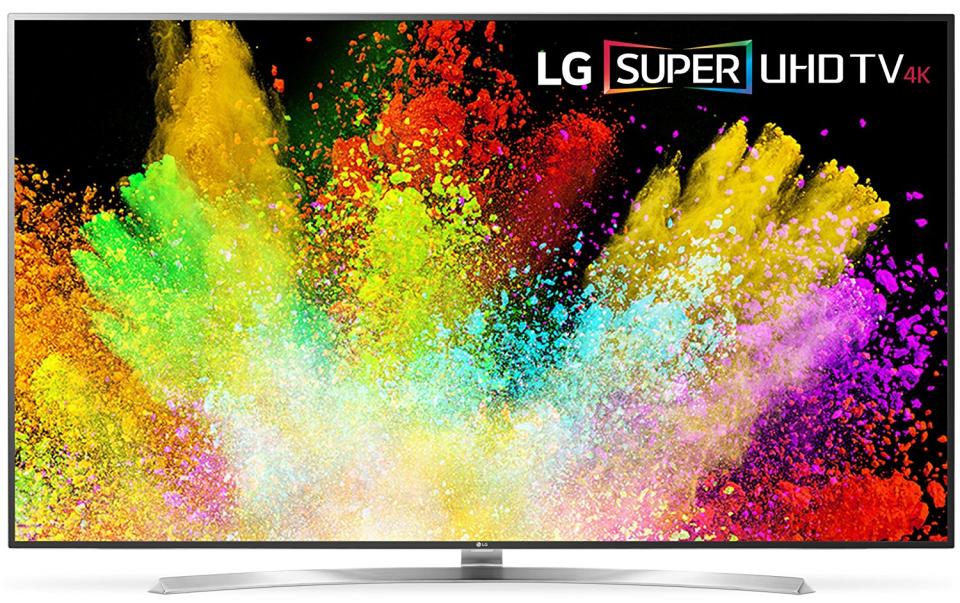Everything you need to know about buying a new TV
The lead up to the Super Bowl is the best time to buy a new TV. But with all of the features, flourishes and companies fudging their sets’ numbers, figuring out which TV to buy can be quite a challenge. After all, you don’t want to click that buy button or go into the store and not know the difference between a 4K, HDR LED TV with local dimming, and a 4K, HDR OLED TV, do you?
No, you don’t. So, here’s a quick refresher on some of the key terms and specs to look for when buying a new TV.
4K TVs
You’ve probably heard about this term at nauseam, but here it is. 4K, also known as ultra-high definition or UHD, simply refers to a television with a resolution, the total number of pixels along its horizontal and vertical axes, of 3,840 pixels x 2,160 pixels. It’s only worth getting a 4K TV, though, if you’re purchasing a set with a screen that’s 55 inches or larger, since you’re unlikely to notice the difference between a smaller 4K TV with a 1080p resolution screen.
HDR TVs

HDR TVs are essentially televisions with screens that offer high contrast ratios. That means there’s a greater difference between the darkest the image can appear and the brightest it can appear. HDR also brings along a wider color gamut, which means your TV is able to show a larger range of colors than standard sets. Between 4K and HDR, HDR easily offers the most noticeable improvement in terms of image quality.
LED TVs
These are TVs that use LEDs, or light-emitting diodes, for their backlighting rather than cold-cathode fluorescent lights, which are less power efficient. Chances are if you’re buying an LCD TV today, it will have LEDs.
Edge lighting and local dimming
These go hand-in-hand with LED TVs. See, LED-lit TVs usually use lines of LEDs on their top, bottom or sides as light sources. That’s where the term edge lighting comes from. Local dimming is the ability for a TV to dim its LEDs in parts of an image while lighting others up.
You’ll see this on your TV when you load Netflix (NFLX) for instance. If your set uses edge lighting on its top and bottom edges like mine does, the edges of the screen will look black, while the Netflix logo will be noticeably brighter, adding depth to the image.
The problem is, edge lighting also lights up areas that are meant to be dark, due to light bleed. Take that Netflix logo, for example. While the sides of the screen will look dark, the black areas close to the Netflix logo will be a kind of muted black.
Companies try to fix this by using either lining the top, bottom, and sides of their TVs with LEDs rather than the top and bottom or just the sides. It’s better than if a TV didn’t use local dimming at all, for sure, but it’s not perfect.
OLED TVs

Televisions that use OLED, or organic light-emitting diodes, backlighting technology. OLED TVs offer higher contrast ratios than even LED HDR TVs, because individual parts of a pixel can be switched off. That prevents those kinds of weird washed out blacks you get with LED TVs with local dimming. OLED TVs are also a heck of a lot more expensive than LED screens, and not nearly as mainstream.
Refresh rate
The refresh rate of a television is how fast it produces an on-screen image. See, the motion of a television is just a trick of the eye as still frame after still frame appears on screen one after the other. You’ve probably seen TVs with fresh rates of 60Hz, or 60 frames per second, which means they change images 60 times each second. There are also 120Hz televisions, which can produce smoother movement thanks to the increased number of images you’ll see.
Some companies also advertise 240Hz refresh rates, but those aren’t true frame rates and usually use some kind of proprietary technology to make images look smoother. Even some TVs that advertise 120Hz rates are really just running at 60Hz.
You can normally tell if a refresh rate is real or not based on how it’s advertised. If you see something calling it super clear, or motion speed, or something like that, it’s probably not the true refresh rate.
It’s also important to point out that if you play games on your TV, your console likely only outputs at 30Hz to 60Hz, so you won’t really benefit from a 120Hz screen.
Now that you’re armed with the proper knowledge, go forth and buy the TV of your dreams.
More from Dan:
Twitter needs to do a better job of explaining how we got duped by Russia
You’d be stupid to turn off Apple’s iPhone performance limiter
Email Daniel Howley at [email protected]; follow him on Twitter at @DanielHowley.
Follow Yahoo Finance on Facebook, Twitter, Instagram, and LinkedIn
